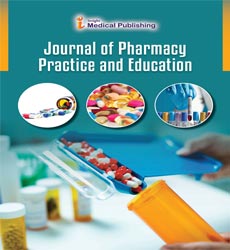Effect of Drug to Brain and Nervous System through Experiments and Clinical
Igna Thankachan*
Department of Health Science, University of Michigan, Ann Arbor, Michigan, USA
- *Corresponding Author:
- Igna Thankachan
Department of Health Science
University of Michigan
Ann Arbor, Michigan
USA
E-mail: tkachangna@partners.org
Received Date: March 05, 2021; Accepted Date: March 22, 2021; Published Date: March 29, 2021
Citation: Thankachan I (2021) Effect of Drug to Brain and Nervous System through Experiments and Clinical. J Pharma Prac Edu Vol.4 No.2:e042.
Description
Neuropharmacology is that the study of how drugs affect cellular function within the system, and therefore the neural mechanisms through which they influence behavior. There are two main branches of neuropharmacology: behavioral and molecular. Behavioral neuropharmacology focuses on the study of how drugs affect human behavior, including the study of how drug dependence and addiction affect the human brain.
Molecular neuropharmacology involves the study of neurons and their neurochemical interactions, with the general goal of developing drugs that have beneficial effects on neurological function. Both of those fields are closely connected, since both are concerned with the interactions of neurotransmitters, neuropeptides, necrohormones, neuromodulators, enzymes, second messengers, co-transporters, ion channels, and receptor proteins within the central and peripheral nervous systems. Studying these interactions, researchers are developing drugs to treat many alternative neurological disorders, including pain, neurodegenerative diseases like brain disease and Alzheimers, psychological disorders, addiction, and plenty of others.
Neuropharmacology could be a very broad region of science that encompasses many aspects of the system from single neuron manipulation to entire areas of the brain, funiculus, and peripheral nerves. To higher understand the premise behind drug development, one must first understand how neurons communicate with each other.
Neurons are referred to as excitable cells because on its surface membrane there are an abundance of proteins referred to as ion-channels that allow small charged particles to pass in and out of the cell. The structure of the neuron allows chemical information to be received by its dendrites, propagated through the perikaryon (cell body) and down its axon, and eventually passing on to other neurons through its axon terminal. Once the nerve impulse reaches the axon terminal, it'll cause an influx of calcium ions into the cell. The calcium ions will then cause vesicles, small packets crammed with neurotransmitters, to bind to the cytomembrane and release its contents into the synapse there are two styles of receptors that neurotransmitters interact with on a post-synaptic neuron. The primary kinds of receptors are ligand-gated ion channels or LGICs. LGIC receptors are the fastest styles of transduction from chemical signal to electrical signal. Once the neurotransmitter binds to the receptor, it'll cause a conformational change that may allow ions to directly flow into the cell. The second types are referred to as G-proteincoupled receptors or GPCRs.
One style of behavioral neuropharmacology focuses on the study of drug dependence and the way dependency affects the human mind. With acute alcohol consumption, dopamine is released within the synapses of the mesolimbic pathway, successively heightening activation of postsynaptic D1 receptors. With chronic alcohol intake, consumption of ethanol similarly induces CREB phosphorylation through the D1 receptor pathway, but it also alters NMDA receptor function through phosphorylation mechanisms; an adaptive downregulation of the D1 receptor pathway and CREB function occurs moreover. Chronic consumption is additionally related to a bearing on CREB phosphorylation and performance via postsynaptic NMDA receptor signaling cascades through a MAPK/ERK pathway and CAMK-mediated pathway.
Open Access Journals
- Aquaculture & Veterinary Science
- Chemistry & Chemical Sciences
- Clinical Sciences
- Engineering
- General Science
- Genetics & Molecular Biology
- Health Care & Nursing
- Immunology & Microbiology
- Materials Science
- Mathematics & Physics
- Medical Sciences
- Neurology & Psychiatry
- Oncology & Cancer Science
- Pharmaceutical Sciences
